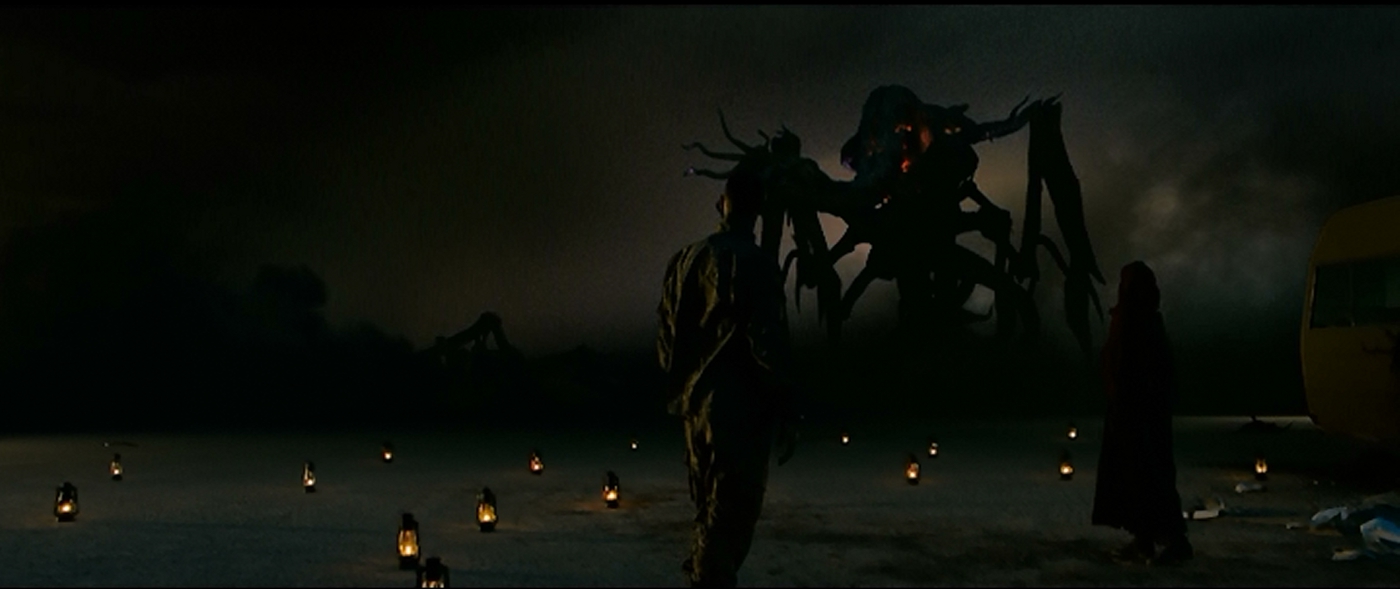
The film starts off in Detroit. Devastated, post-apocalyptic-looking Detroit. Ruined locations will be the norm for the film. And it's entirely in shaky-cam. Normally, I hate shaky-cam. All of the footage from Monsters: Dark Continent sways gently as if shot by a handheld. In this one case, I think it enhances the film, never allowing the audience to focus on one thing entirely, emphasizing the shifting and slippery nature of action and intent.
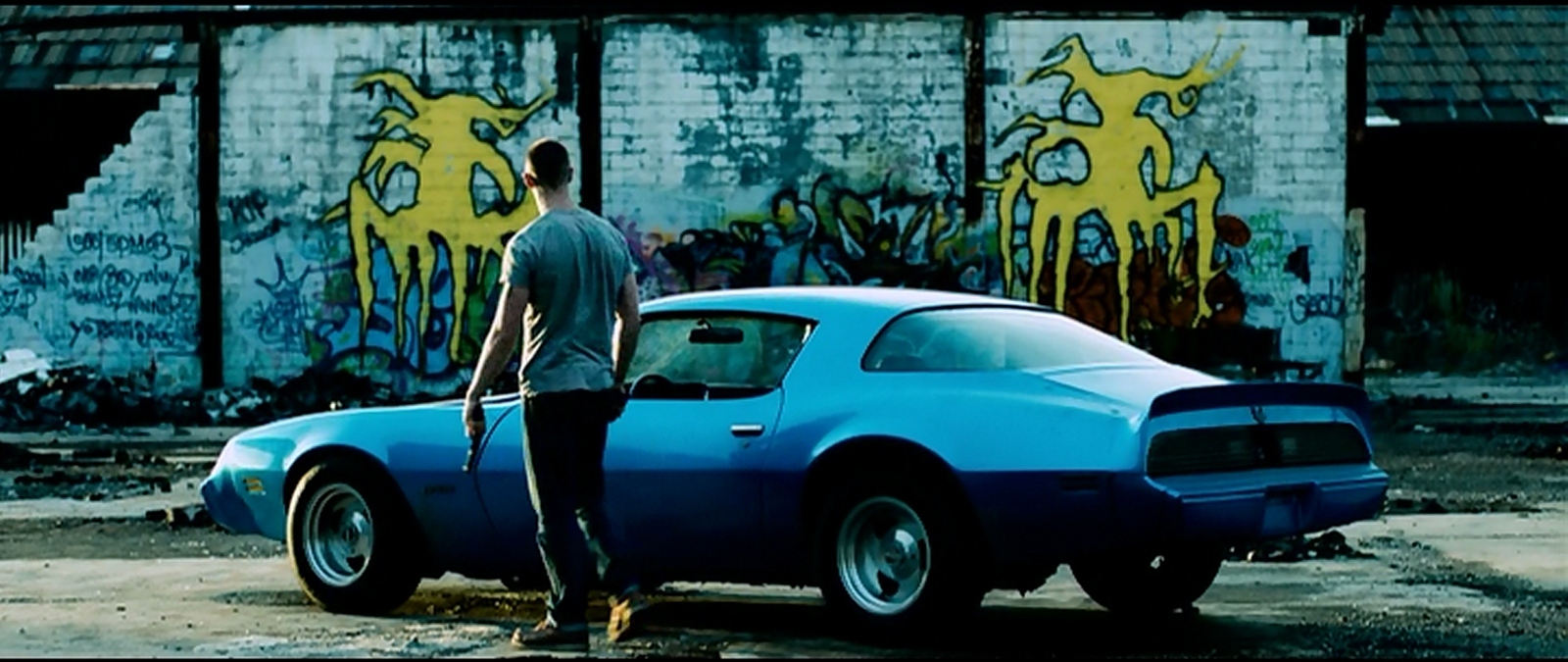
Our protagonist, Parkes, joined the army to get out of Detroit. The army's original mission was to destroy the monsters, but imprecise bombing has turned a segment of the unnamed Middle-Eastern populace against American intervention. Yes the metaphor is pretty transparent, but with fantasy and horror films, it is possible to deal with themes that are too difficult to deal with head-on. Detroit holds no opportunity for Parkes, so he had to look for it elsewhere. But even in America, the monsters are a presence. Parkes shoots at painted images of monsters. He attends a bloodsport pitting a dog against a small version of the monsters. Parkes, winning us some sympathy, is disgusted by the entertainment.
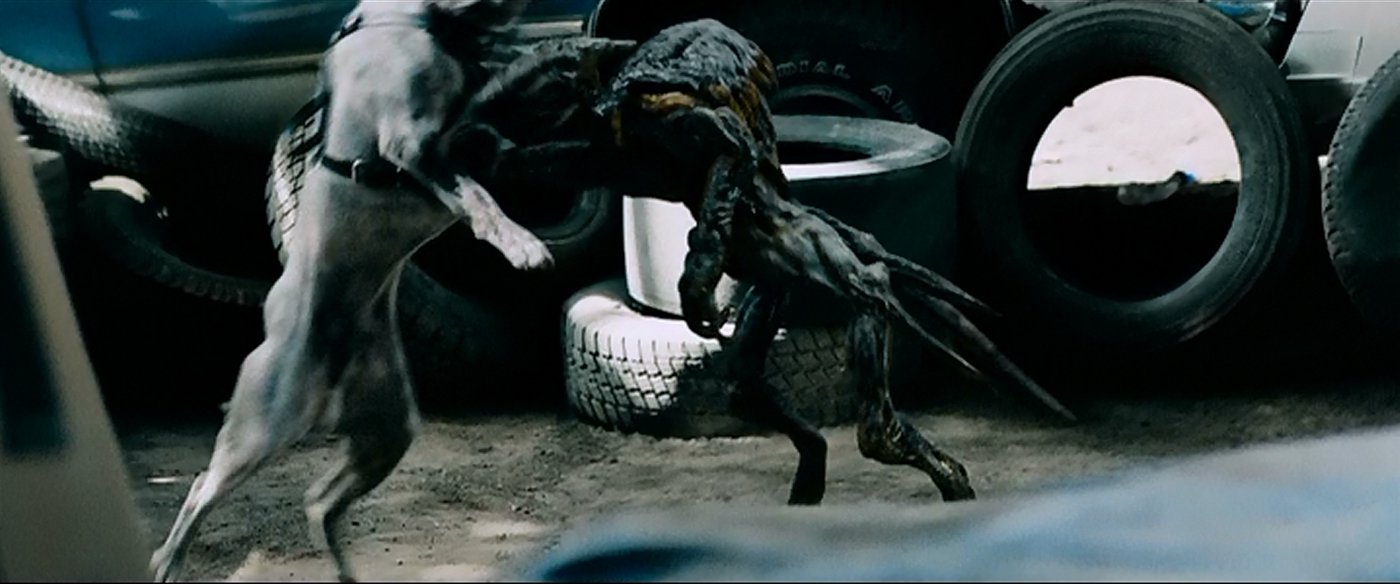
Parkes ships out with his three best friends, Frankie, Shawn, and Karl. Sadly, we know that Shaun is going to die. His wife just had a baby, he promises to come back, and he's black. His fate could have only been more certain if he'd been about to retire.
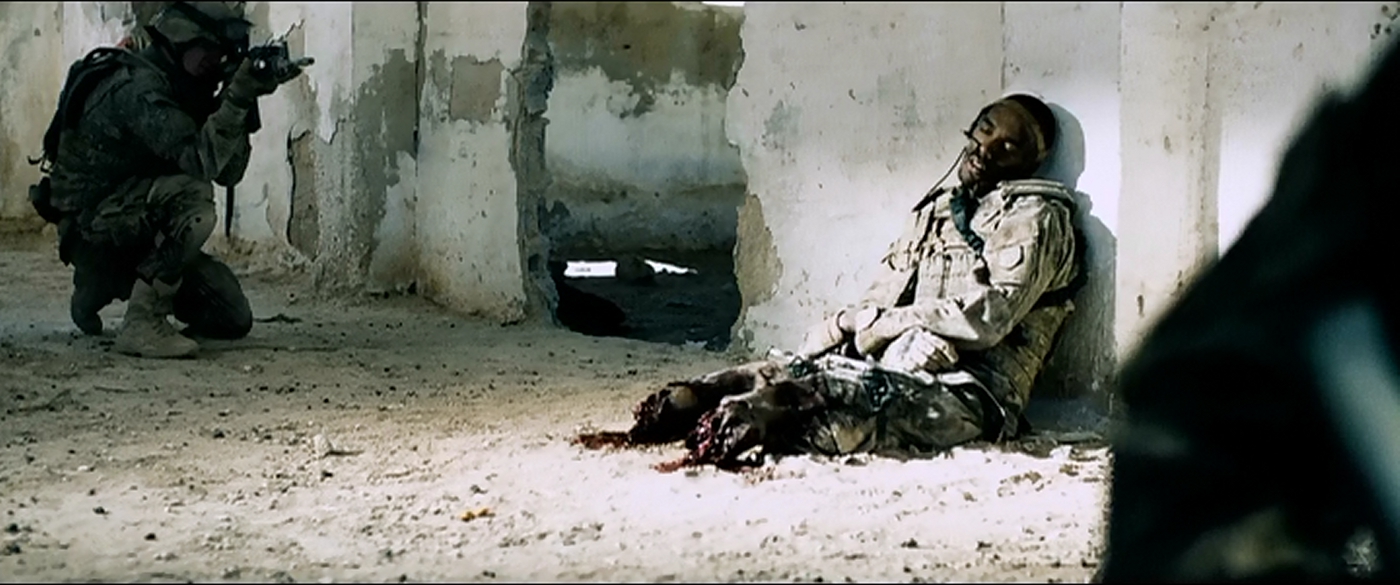
In the desert, things are different from Detroit. Goliaths roam the dry planes in gigantic herds. These seem different from the previous iterations, perhaps due to the environment. But the monsters are no longer the military's main mission. Now, they are mainly concerned with shutting down insurgent activity. While the Goliaths are a threat, they do not set IED traps. And while anyone can identify a Goliath on sight, it's difficult to tell if any given local has hostile intentions. Nothing in this area is as clear as it seems.
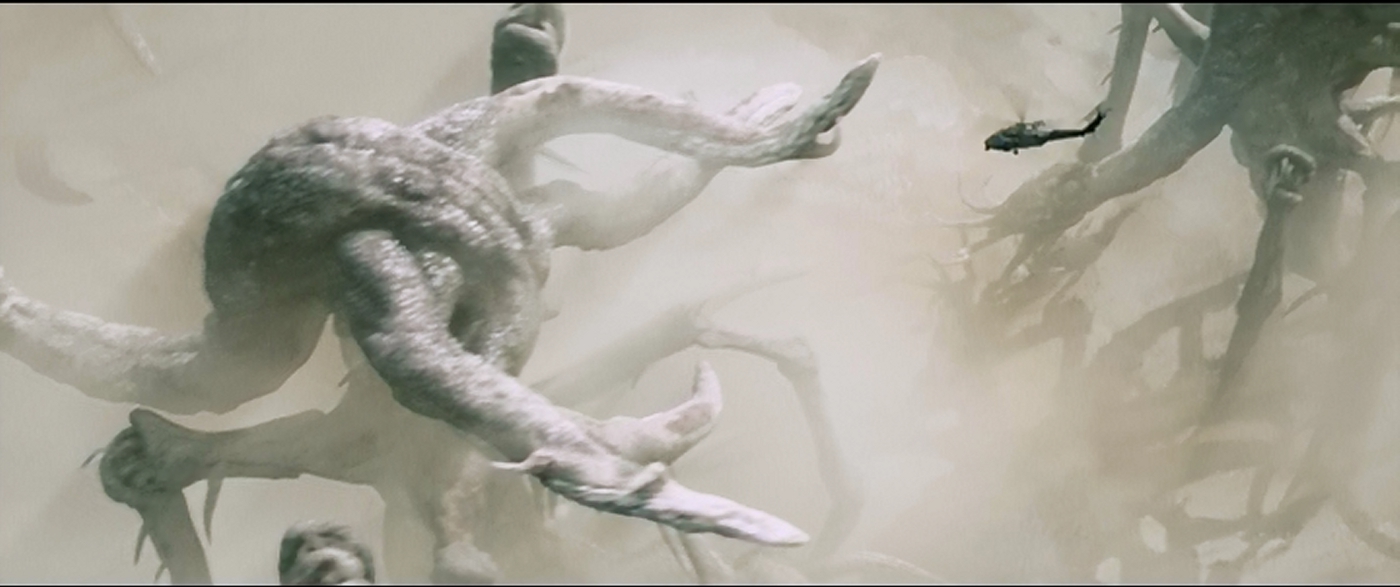
We also meet a horse-sized intermediate stage monster. It can run along at a good clip, moving quickly on six legs. It is never made clear if all these different creatures are different species of alien, or of they are all growth stages of the Goliaths.
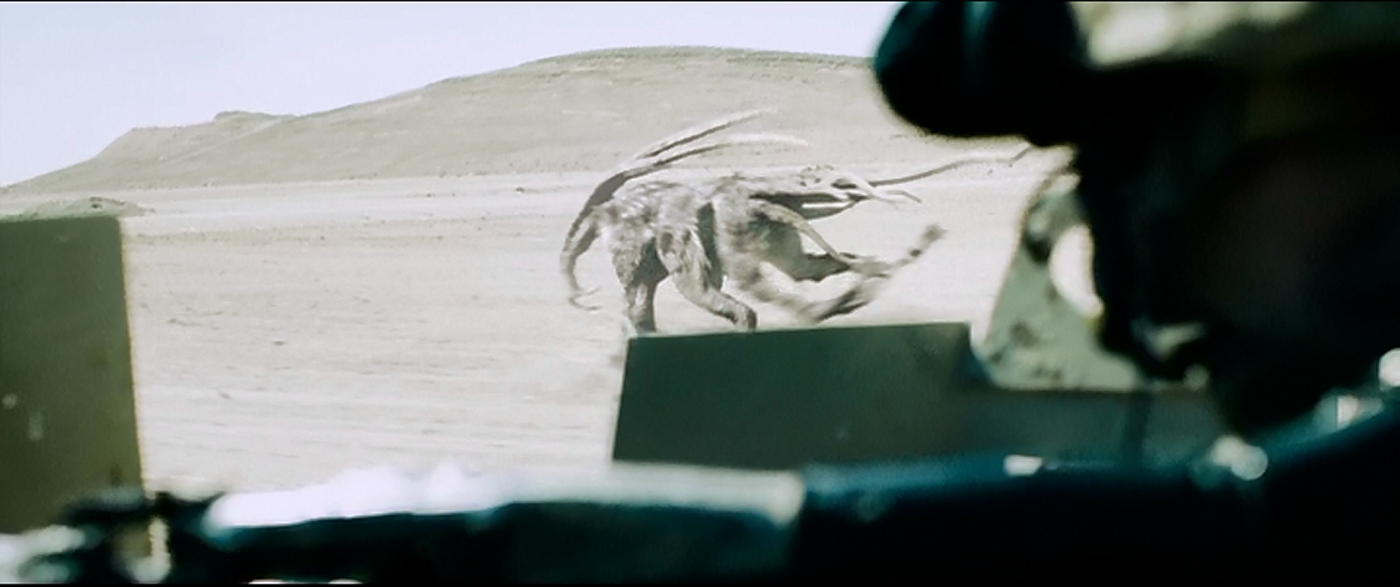
Everything turns to shit when they are ambushed. An IED followed by sniping kills the majority of the team, and pushes the protagonists into the hands of insurgents.
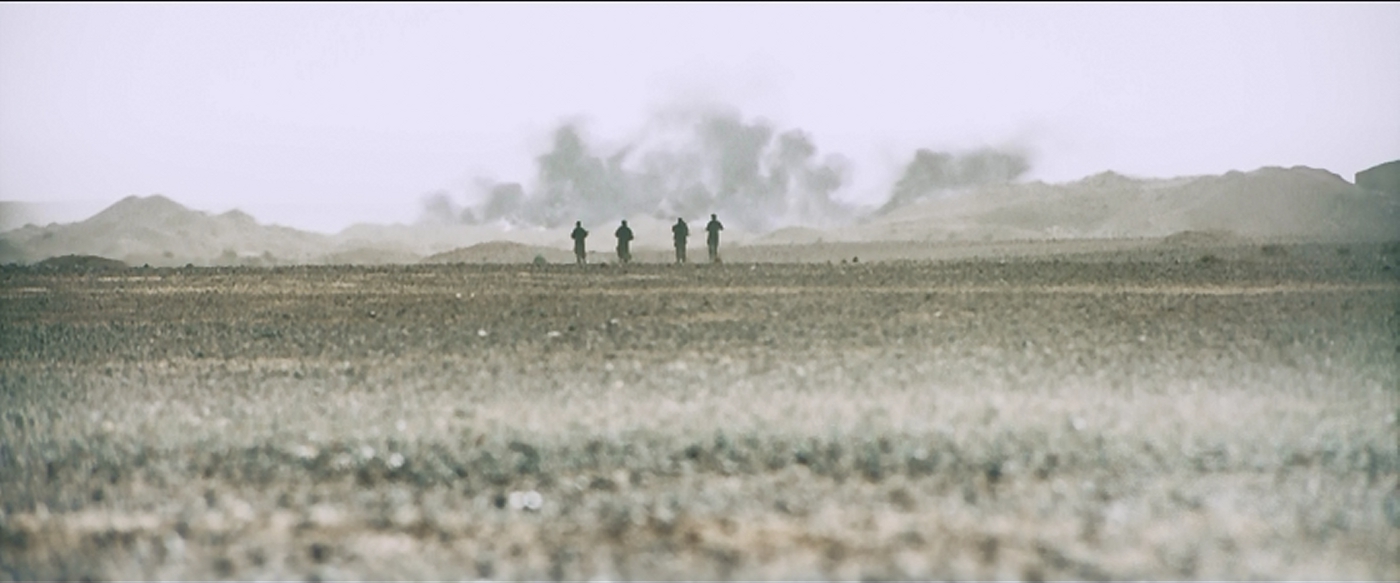
The plot moves with frenetic brutality. Parkes' friends are killed without warning. We watch Frankie die a slow death, bleeding out from an abdominal wound. The casual interpretation of the film, asking who is the real monster, doesn't really fit. The camera does not judge actions. The script does not punish. The viewer is merely along for the ride, unable to see the next thing coming. Like the monsters, the brutality of humans just is, and the film makes no attempt to explain or justify it. But every major character has a meltdown at one point.
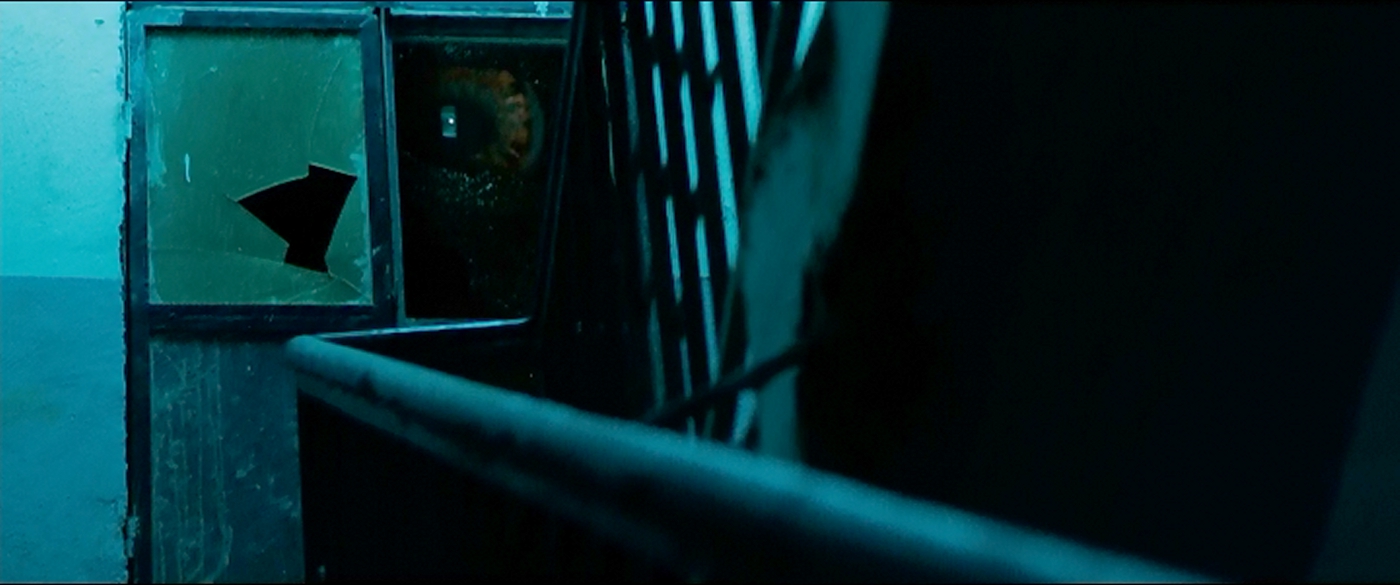
At this point, the film becomes is very similar to the first. Two people, in this case Parkes and Frater, undertake a journey that is impeded by the monsters. They meet local people, and get experience the hospitality of a involved in a culture they do not understand. Parkes wanders out into the night, and watches one of the Goliaths apparently mourning one of its own. The corpse releases spores in a beautiful florescent purple display. Like the people the Goliaths are capable of making something beautiful.
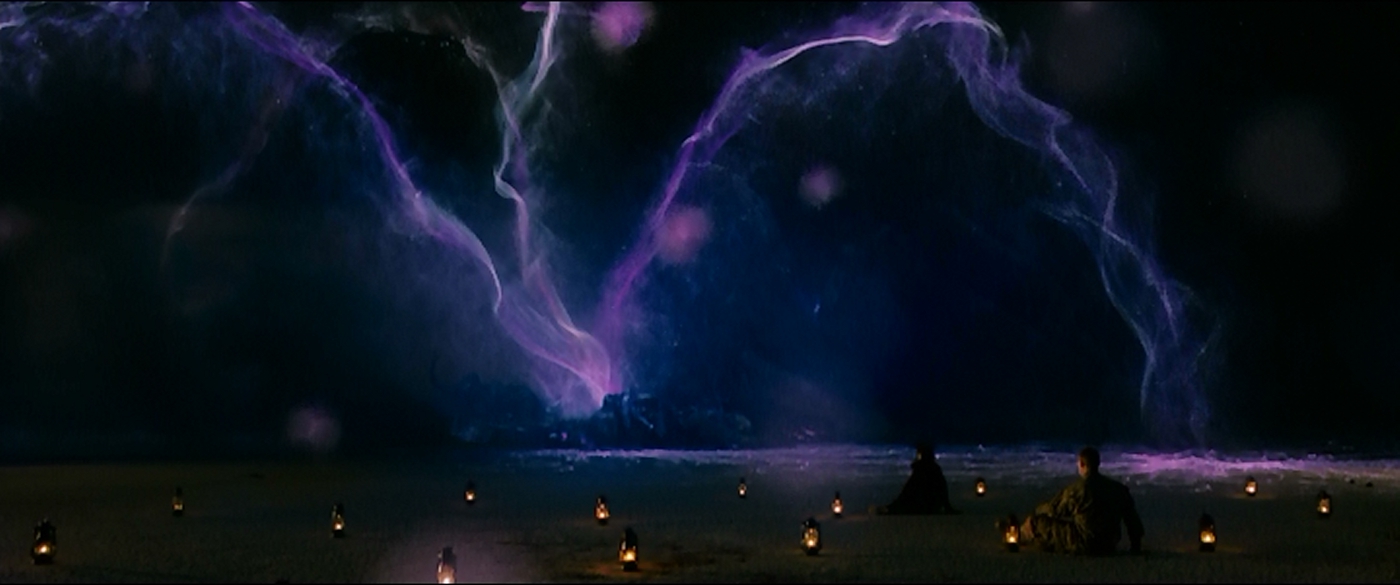
In an interesting closer that parallels the opening, Frater and Parkes come across some kids who are shooting at a wall with a painted Goliath on it. Exactly what Parkes was doing at the beginning of the film.
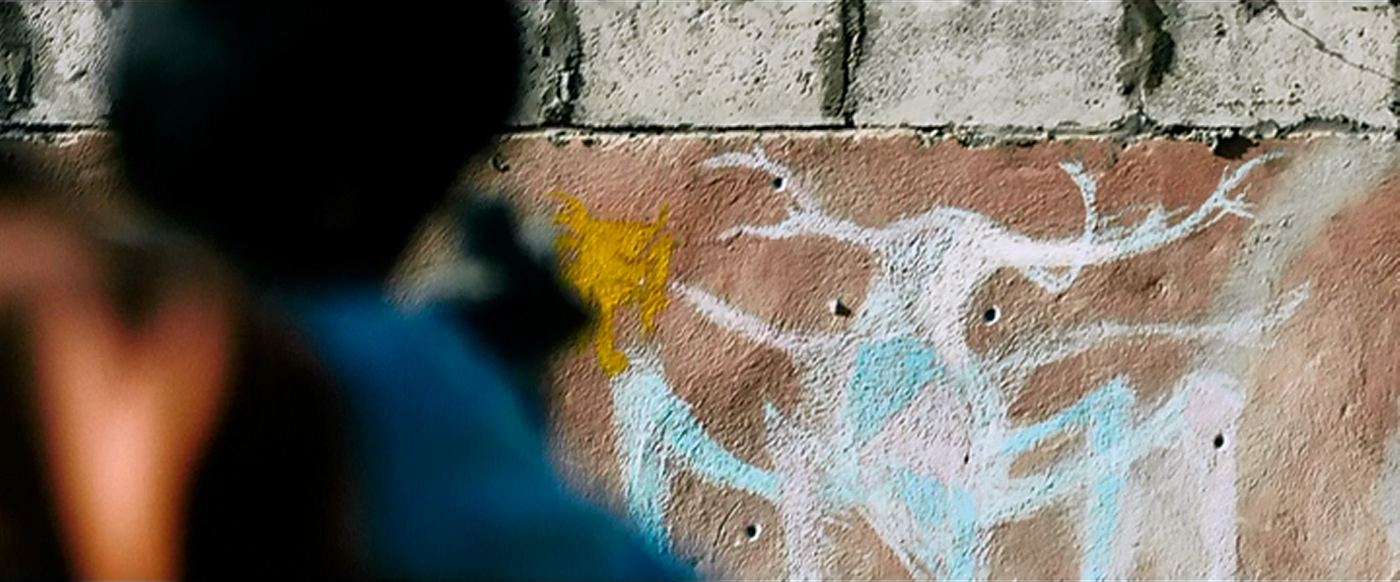
In the end, Frater becomes untethered because the mission is a failure. The men he is looking for are dead. That's been his focus, the thing that has kept him together through the film. The mission, which Frater has clung to, has failed. He staggers out of town to see an enormous eruption of something fantastically larger than any was have yet seen. And there the film ends.
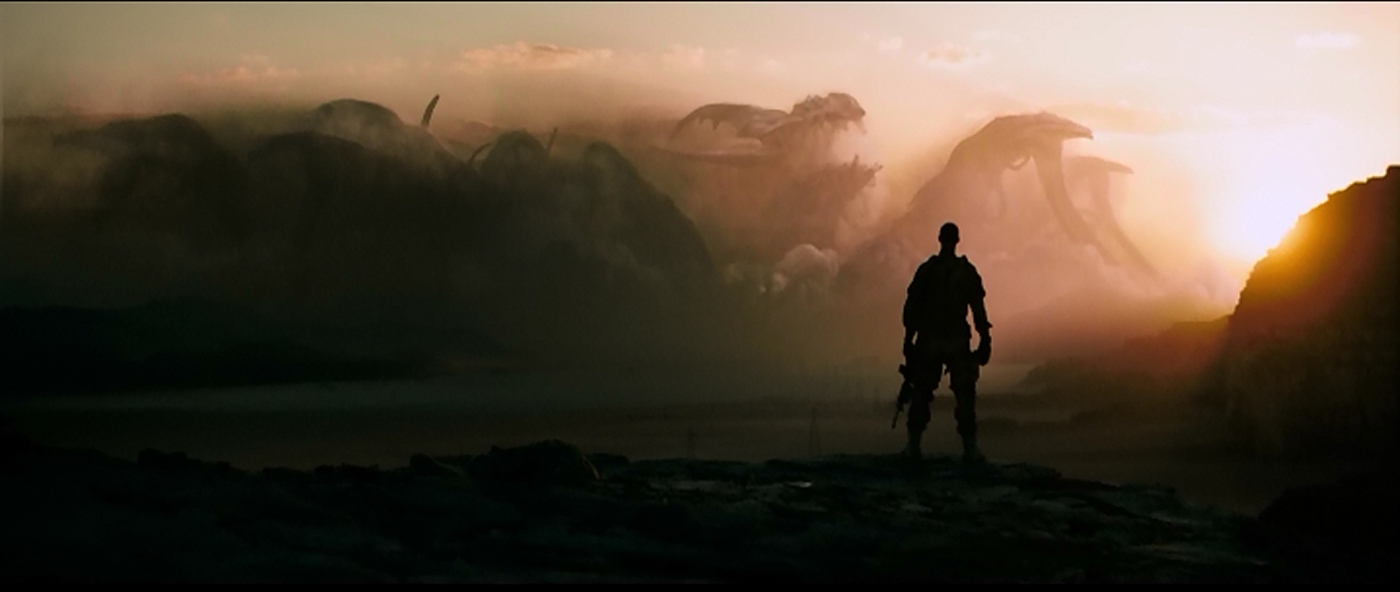
There's a Cloverfield feel to Monsters: Dark Continent. The film doesn't feel it owes the audience a detailed explanation. In fact, that seems to be the point. The audience is just as much in the dark as to what's going to happen next as the characters are. Frightening things are happening, and it wears on the human characters. The monsters of the film aren't the focus, which was off-putting to a lot of people who were hoping for a movie that dealt more directly with monsters. As it is, I have to agree with Kim Newman's review for Empire, it's a good film that takes on human extremes in a way that a more straightforward film more directly about war would. As alien invasions go, this one is messy and slow, just like real-world invasions.